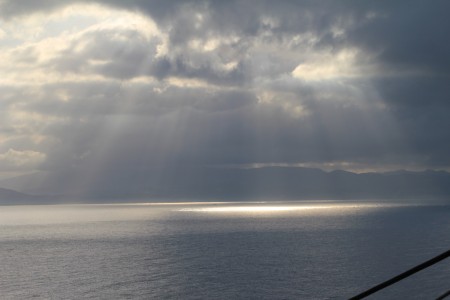Sunstroke From Sun
Lack of Ozone and Global Warming is causing health problems.
Summers are now hotter than ever, and the sun’s rays more damaging.
For the past three years, at some time during the period from Christmas time to late February, I have suffered serious sun-stroke, several times each season, with debilitating effects.
Gone are the days of lying about near-naked in the sun, or playing tennis in our latest bikini-top, as we were want to do in the days of our youth.
For many of us, swimming attire for the public eye lost its appeal many moons ago.
However, we are not safe from the sun’s radiation just because we do not sunbathe anymore.
Seriously, the New Zealand sun in summer is now very much to be avoided.
Dehydration Fever And Headaches From Sun
I personally have become so sensitive to the summer sun that I cannot garden during the day-time, or undertake any other activity where I am exposed to the sun for longer than about 15 minutes at a time.
Perhaps I am more vulnerable to the negative effects of the sun because I do not have a car and consequently walk everywhere to do my shopping and business.
If I do spend longer time outside, then a pounding headache and fever will plague me for about three days, during which time I am completely incapacitated.
The temperature is very difficult to stabilize after sun exposure of even an hour or two in the early morning, well before the sun has heated everything up.
Homeopathic Arsen alb and Arnica have proven to be the best remedies for the heat stroke and sunstroke I have suffered. I used these every 15 minutes or so whilst necessary. Keeping a wet towel over the head and forehead was very helpful in producing comfort by reducing the temperature a little. Sipping cold water at regular internals is essential. In the worst case scenario, cold water enemas stopped the temperature from soaring to dangerous levels and remedied dehydration.
Because of severely depleted ozone in the atmosphere, which should protect us against harmful energies emitted by the sun and cosmic forces, we are now being zapped by these extremely destructive forces. These unknown forces are seriously putting our health at risk.
I am not alone in this dilemma. I know many other people my age who say they are experiencing the same thing. Even one of the local posties, who is a lot younger than myself, had to take time off recently because of sun-stroke.
Weather Forecast Temperatures Are Not Accurate
Interesting that the temperatures in our town are sometimes up to 10 degrees hotter than what our weather forecasts predict.
Our town is south of Auckland by about an hour and a half’s drive. Yet our temperatures during summer are far hotter than those forecast for Auckland, and far hotter than what is predicted for our Waikato area.
We are hotter than Auckland because we are inland and do not enjoy those eternal sea breezes which most parts of Auckland experience. We are also a farming region where many agricultural chemicals are used. Many of these poisons have ozone-destroying potential.
And we are hotter than predictions for Waikato, because temperatures are taken miles away from our town, at Hamilton airport, which is a windy part of the region.
A few days ago we were told we would have temperatures of around 26 degrees. We got 37 degrees. Two days ago it was meant to be 30 degrees. We were 41 degrees at noon. A ten minute walk to the shops with broad-brimmed hat and umbrella almost suffocated me with heat.. I put my thermometer out on the deck concrete and the needle soared beyond the last reading at 50 degrees within minutes. Inside, it settled down at 41 degrees. That evening it was 27
Years ago, when talk of climate change and global warming first hit the headlines, we used to joke about moving from Auckland in the North Island to Dunedin in South Island New Zealand, to escape the effects of climate change. Dunedin gets about two thirds of Auckland’s sunshine hours and has more moderate summer temperatures.
I am considering moving down there. Winters are a bit bleak, with few sunshine hours and much drizzly weather. But the possibility of enjoying summer outside under a kindly, hopefully more pallid sun seems very appealing right now.
My new book is available on Amazon:


